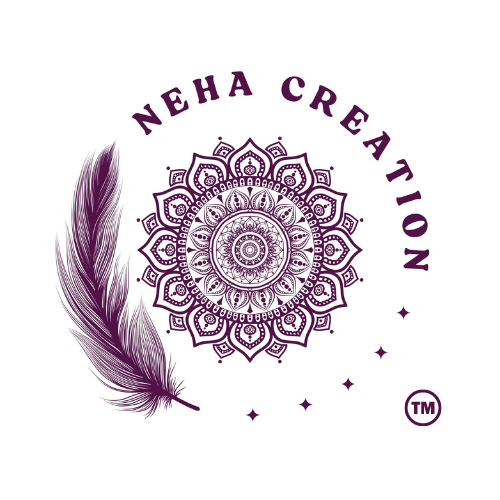In today’s fast-paced, overstimulated world, both children and adults are seeking new ways to cultivate calm, focus better, and develop emotional resilience. One of the most accessible and deeply healing tools to emerge from ancient spiritual traditions is mandala meditation—an artistic and mindful practice that offers both inner peace and powerful self-education.
Whether you're a student, teacher, parent, or spiritual seeker, meditating with mandalas is a life-changing practice that combines creativity, focus, and emotional growth.
Let’s explore how mandala meditation is not only an art form but also a form of inner education for modern minds.
🌸 What is Mandala Meditation?
The term mandala comes from Sanskrit, meaning “circle.” A mandala is a geometric, symmetrical design that radiates from a central point. It is often used in Hinduism and Buddhism as a tool for meditation, spiritual connection, and self-discovery.
Mandala meditation involves focusing on the creation or observation of a mandala, allowing the mind to quiet and the heart to open. This mindful activity becomes a gateway to self-awareness, emotional regulation, and inner education.
🧘♀️ Why Mandala Meditation is Transformative
Meditating with mandalas activates both the creative right brain and the analytical left brain, helping you to enter a state of flow. This flow is where your worries fall away and true learning begins—not from the outside world, but from within.
🌿 Key Benefits:
-
Boosts self-esteem and inner peace
For students and professionals alike, mandala education enhances not only academic performance but also emotional intelligence.
🎨 The Art of Mandala Drawing as Meditation
You don’t need to be an artist to benefit from mandala drawing meditation. The process itself is deeply therapeutic. Here’s how to do it:
Step 1: Set an Intention
Before you begin, ask yourself what you want to feel or release. Peace? Gratitude? Clarity?
Step 2: Draw or Use a Mandala Template
You can use pre-printed mandalas or draw your own using basic shapes radiating from a center point. Use colors intuitively.
Step 3: Breathe and Focus
As you draw or color, observe your breathing. Let your thoughts come and go like clouds. Stay present with the shapes and patterns.
Step 4: Reflect
When finished, look at your mandala. What do you feel? What do the colors or patterns say about your current state?
🏫 Mandala Education in Schools and Learning Spaces
Mandala education is increasingly being introduced in schools to support mental health, concentration, and self-regulation in students. Mandalas are used in:
-
Classroom mindfulness activities
-
Special education programs
-
Exam stress reduction workshops
Even five minutes of mandala meditation daily can help students manage emotions and enhance academic performance.
“When students draw a mandala, they’re not just learning art—they're learning about themselves.”
🌈 Mandala Meditation as a Tool for Emotional Healing
Many therapists and coaches now recommend mandala meditation to individuals dealing with anxiety, grief, trauma, or burnout. The circular nature of mandalas offers a safe and structured space for emotional exploration.
Each pattern can reflect inner chaos or harmony. Each color used can symbolize healing or intention. Over time, mandala meditation becomes a mirror of your emotional landscape—and a path to integration.
Try this:
Next time you're feeling overwhelmed, instead of scrolling your phone, take 10 minutes to color a mandala. Breathe. Feel. Express. Let go.
💡 Mandala Meditation for Adults and Professionals
Mandala meditation isn’t just for students or artists. Professionals, entrepreneurs, parents, and even retirees can benefit greatly from it.
In the middle of a hectic day, taking a few minutes to color or gaze at a mandala can:
-
Reset your nervous system
-
Calm your racing thoughts
-
Unlock creative solutions
-
Build patience and presence
Many workplaces are now including mandala coloring breaks in wellness programs to reduce stress and enhance productivity.
🌀 Mandalas and Inner Education: Learning from Within
The most profound education is not found in textbooks—but within your own heart and mind. Meditating with mandalas teaches you:
-
How to focus without force
-
How to express emotions non-verbally
-
How to observe your inner world with compassion
-
How to return to balance when life feels out of control
“A mandala is not just a pattern—it’s a portal into your own wisdom.”
By practicing regularly, you begin to teach yourself resilience, calmness, and clarity.
📿 Integrating Mandala Meditation into Daily Life
You can begin small. Here are a few simple ways to include mandala meditation into your daily or weekly routine:
-
Start your morning with 10 minutes of mindful coloring
-
Keep a mandala journal to reflect your moods
-
Meditate while gazing at a mandala artwork
-
Create a group activity with friends, children, or students
-
Use mandalas as visual aids during breathwork or yoga
🌟 Final Thoughts: Mandala Meditation is the New Education
In a world driven by external achievement, mandala meditation invites you inward. It doesn’t require you to be perfect. It simply asks you to be present.
Through drawing, observing, or simply sitting with a mandala, you begin to unlearn stress and relearn balance. This is not just self-care—it is self-education.
Whether you’re 6 or 60, you can benefit from the stillness, structure, and soulful wisdom that mandalas bring.



